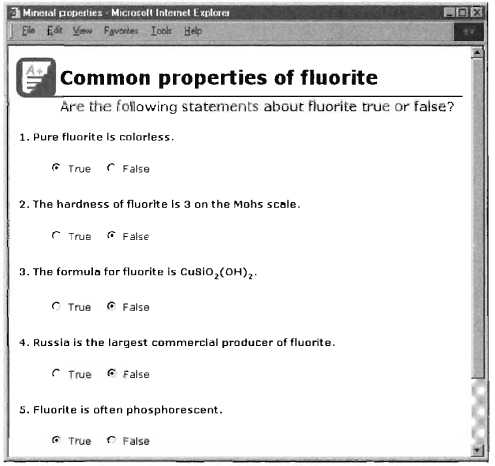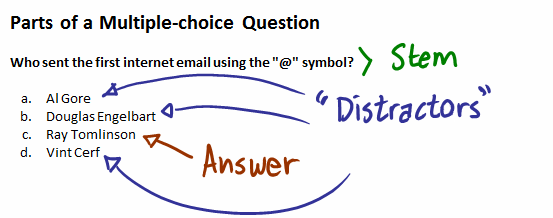Ψlogical
Testing
Chapter 6
Item writing & Evaluation
Item writing & Evaluation
House keeping 🧹🗑
- First exam 3/6 (Thurs)
- In class, but administered via Canvas (Ch 1 \(\rightarrow\) 8)
- Project:
- keep revising
- Hinkin (2005)
- item writing
![]()

🔭🌠ASTEROID YR4 PANIC METER!!!🌌💥


Item writing!!

Terms used:
- Stem – Stimulus (prompt)
- Option – Response (reaction)
- Distractor – Incorrect response option
- Key – scoring algorithm

Item “Types”
Dichotomous vs Polytomous not very common or helpful distinction – we’re not going to use it
- How many response categories are offered
- Has implications, but not good differentiator of different types of items

Common types
Note
Items may also require scoring rubrics – for example, essay, short-answer, and fill-in-the-blank item types

True–false
- sometimes yes–no
- 50% chance of “getting correct” regardless of construct standing
- familiar
- easy to score
- aka recoding

Forced choice1
- aka paired comparisons
- scoring may be ipsative
- typically multidimensional construct(s)
- elaborate scoring key
- response option–aggregate scale associations

Multiple choice
- 20–25% chance1 of “getting correct” regardless of construct standing
- familiar
- easy to score
- poor distractors can be response cues

Likert-type
- options progress along a response continuum
- most common item type in inventories
- both unidimensional and multidimensional
- familiar
- elaborate scoring key
- partially due to reverse scoring

“Categories”
- for example, standard 10-point
- not common in Psych assessment
- familiar
- non-psychometricians tend to like 😍

Checklists
- aka multiple response
- adjective checklist historically popular
- choose as many descriptors as desire
- more common in demographic than substantive trait measurement
- (likely) complex scoring algorithm

“Other”
- your choice should not be tied to any of these formats
- methods others have already tried
- choice of item type is a research decision
- maximize the likelihood of accurately reflecting the intended construct

Item Writing Guidelines
- Define construct
- Sample1 from content domain
- Shorter preferred
- Reading level??
- Double-barrelled??
- Phrasing direction??

Item analysis

Item characteristics
- difficulty (aka extremity)
- average response
- discrimination (aka discriminability)
- differentiation across trait levels
- item functioning with someone high vs low on trait

Difficulty & Discrimination indices
Several common options exist:
- p-value (% correct)
- true tests only
- true tests only
- corrected item-total correlation
- aka “point biserial method”
- visual plot (ICCs)

Item response theory
- Popular alternative to CTT
- Scale score estimation more complex
- Item characteristics permit targetted administrations
- 🐱Computerized Adaptive Testing🦁

Item Characteristic Curves
- more common with true test items
- always a good idea to supplement numerical indices
- several different strategies
- most focus on (at least) difficulty & discrimination

Activity!!
These distractors are…
- really great!! I love them!! Gimme more!!
- bad
- about as useful as a hippopotomous
- better than some I’ve seen boy howdy
With inventory responses, item difficulty may also be referred to as item…
- extremity
- consistency
- discrimination
- equivocation
A visual representation of difficulty and discrimination can be found in a/an…
- ICC
- ODD
- IRT
- CTT
This question type is most accurately described as…
- Multiple Choice
- Forced Choice
- Checklist
- Categories
What’s the capital of Mongolia?
- Ulaan Baatar
- Umaami Baaktari
- Unaan Baaltam
- Utaashi Baaltari
References
Hinkin, T. R. (2005). Research in organizations: Foundations and methods of inquiry (R. A. Swanson & E. F. Holton III, Eds.; pp. 161–179). Berrett-Koehler Publishers.

